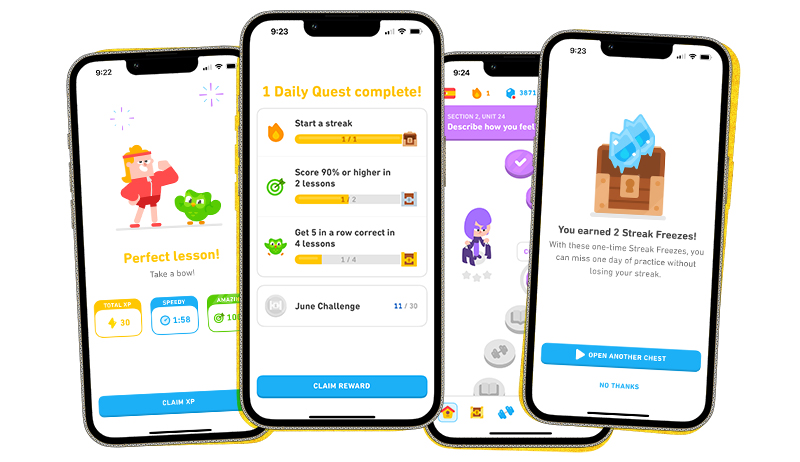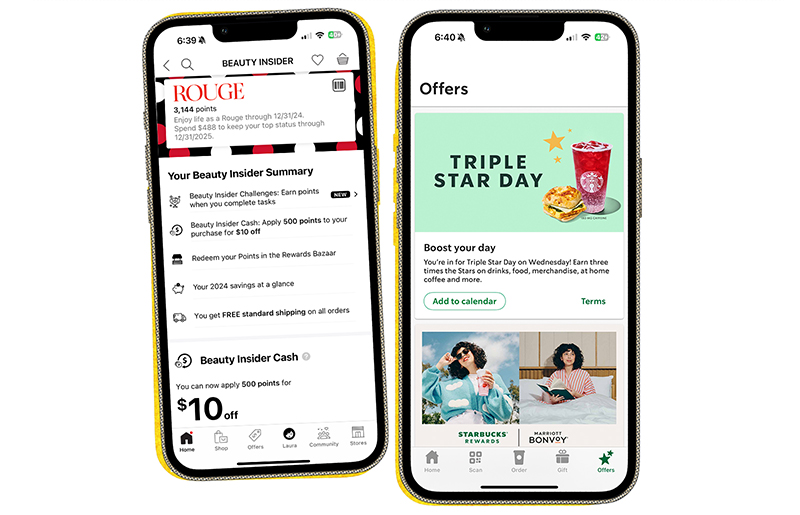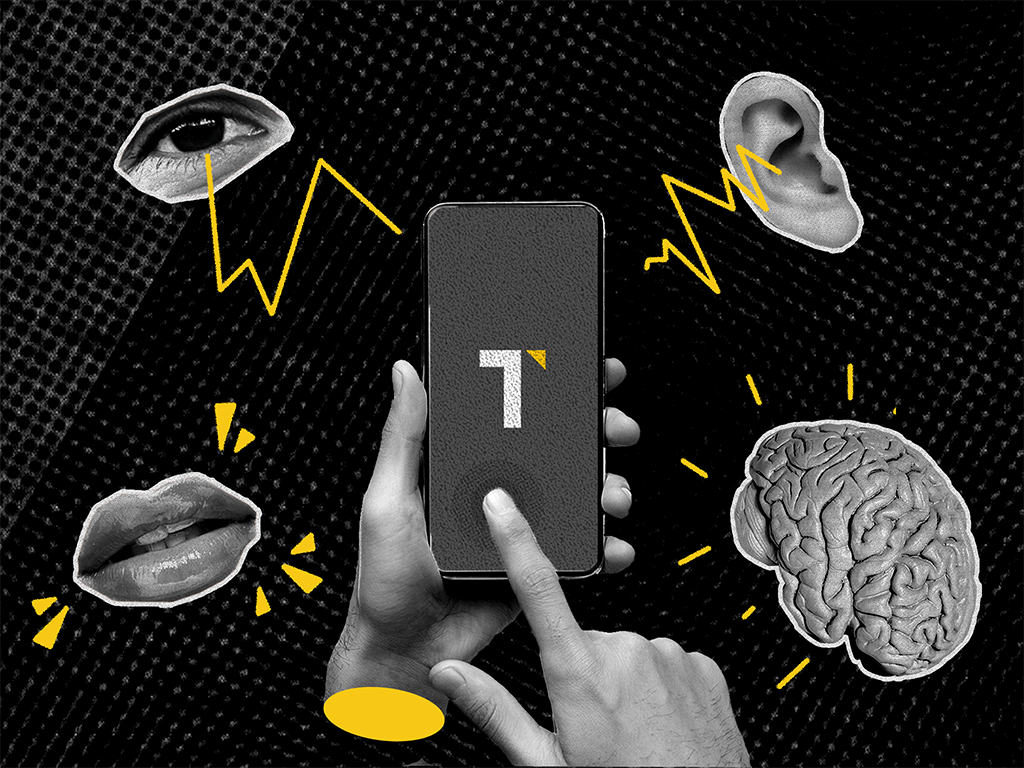Imagine this: you open an app, complete a task, and a delightful chime rings out as a virtual trophy pops up on your screen. You feel a surge of satisfaction, a small rush of accomplishment, and maybe even a drop of dopamine activates in your brain. This is the subtle power of gamification in UX design.
What is gamification in UX design? It is simply the strategic use of game-like mechanics in non-game contexts, and it has become an undeniable force in the digital landscape. As consumers, we increasingly expect playful engagement in the apps and products we interact with, even if we don’t realize it.
But for marketers and business decision-makers, understanding the science behind gamification and its impact on user behavior can be a game-changer (pun intended) for driving long-term engagement and success.
The game is afoot: Why gamification in UX design works
So, what’s the secret sauce behind the effectiveness of gamification in UX? It all boils down to a powerful trio: motivation, reward, and positive reinforcement.
Studies have proven over and over that our brains are wired to respond to challenges and rewards. Gamification taps into this inherent human desire by:
- Introducing elements of competition: Leaderboards, point systems, progress bars, and other visual game elements trigger a sense of healthy competition, motivating users to strive for the top.
- Unlocking rewards: Whether it’s virtual badges, exclusive content, amassing points, or even merch and discounts, the promise of a reward incentivizes users to complete tasks and keep coming back for more.
- Delivering positive reinforcement: The aforementioned chime, a congratulatory message, or even just a simple progress bar filling up all provide positive reinforcement, triggering the release of dopamine, the increasingly rare neurotransmitter associated with pleasure and motivation.
This positive reinforcement loop keeps users engaged, fosters a sense of accomplishment, and ultimately drives desired user behaviors, whether it’s completing a learning element or module, consistently using an app, or making repeat purchases.

The science of fun: Who does gamified UX appeal to?
(Spoiler alert: It’s everyone.)
While gamification might conjure up images of overly anxious Millennials amassing stars to swap for coffee at Starbucks or Boomers swiping away at Candy Crush, the reality is that the appeal of gamification in UX is far-reaching.
The core psychological principles behind gamification are universal human motivators, tapping into our deep-down desires for accomplishment, recognition, and social connection.
Studies have shown that gamification can be effective across various demographics and in all kinds of applications:
- Learning and development: Gamified learning platforms can make educational content more engaging and improve knowledge retention for all ages.
- Employee engagement: Gamified internal applications can boost employee motivation, productivity, and collaboration. And we all know the employee experience matters.
- Wellness and fitness: Fitness trackers and health apps incorporating gamification elements encourage users to adopt and maintain healthy habits.
- Ultimately, gamification speaks to the inner competitor, the reward seeker, and the social butterfly within us all.
Learn more about how Tallwave creates outstanding digital experiences through design.

Beyond the badge: The power of personalized gamification
While leaderboards and badges were the early pioneers of gamification, today’s approach goes beyond the superficial. Forward-thinking gamification personalizes the experience, tailoring rewards and challenges to individual user preferences and behavior. This means:
- Dynamic difficulty: The difficulty level can adjust based on user performance, ensuring an enjoyable experience for both beginners and seasoned users.
- Adaptive rewards: Rewards can be personalized based on user preferences, making them feel valued and motivated.
- Segmented experiences: Gamification elements can be tailored to specific user segments to drive relevant actions, like encouraging first-time users to complete onboarding steps or incentivizing loyal users to try new features.
This personalized approach fosters a deeper connection between users and the product, fostering long-term loyalty and brand advocacy.
The future of personalized gamification in UX is even brighter with the integration of Artificial Intelligence. AI can leverage user data (assuming consumer consent and privacy requirements are met) to recommend relevant rewards and suggest social connections within the app, creating a truly individualized and engaging experience for each user. This level of personalization can further boost user motivation, satisfaction, and loyalty.
Real-world wins: Gamified UX success stories
Seeing the power of gamification of UX in action is as simple as opening up your smartphone or clicking over to your favorite retailer’s online storefront. Here are some inspiring examples of brands using gamification to achieve remarkable results:
Duolingo
This language learning app extensively uses gamification, with points, badges, leaderboards, and a daily streak system to keep users motivated and engaged in their language learning journey. The result? Duolingo boasts a high user retention rate and a loyal following. A social media presence dominated by an unhinged owl helps, too.
Starbucks Rewards
The Starbucks loyalty program is a masterclass in gamification. Users earn stars with every purchase, unlocking rewards and exclusive benefits. This program incentivizes purchases, builds brand loyalty, and encourages repeat visits.

Sephora Beauty Insider
Sephora’s loyalty program, Beauty Insider, is a prime example of gamification done right. It uses a tiered system with point accumulation and rewards that incentivize purchases and brand loyalty. Members earn points for various actions, like making purchases, leaving reviews, and celebrating their birthdays. These points translate into rewards ranging from exclusive discounts and samples to early access to new products and invitations to special events. The program also incorporates a progress bar element, visually showing members how close they are to reaching the next tier (Insider, VIB, Rouge). It adds a touch of friendly competition and motivates them to keep engaging. This gamified approach fosters a sense of accomplishment and keeps customers returning for more, solidifying Sephora’s position as a leader in the beauty industry.
These examples showcase how gamification can seamlessly integrate into various applications to drive user engagement and achieve business goals.
Ready to help your brand win with gamified UX?
By incorporating gamification principles into your UX design, you can unlock a world of possibilities:
- Increased user engagement: Gamification keeps users coming back for more, fostering long-term product loyalty.
- Improved learning and onboarding: Gamified experiences can make learning and onboarding processes more engaging and effective.
- Enhanced brand advocacy: Positive user experiences fueled by gamification can turn users into brand champions who spread the word.
- Measurable results: User behavior data from gamified elements provides valuable insights to optimize your UX strategy further.
But wait, there’s more: Best practices for winning results
Here are some key considerations when implementing gamification into your digital product experience:
- Align with your goals: Ensure gamification elements directly support your overall product objectives. Don’t just add points for the sake of adding points!
- Keep it relevant: Tailor gamification mechanics to your target audience and the specific actions you want to encourage.
- Don’t overdo it: Too many bells and whistles can overwhelm users. Keep it simple and seamlessly integrate gamification elements.
- Measure and iterate: Track user behavior data to see what’s working and what’s not. Be prepared to refine your gamification approach based on insights
By strategically incorporating gamification into your UX design, you can create a more engaging and rewarding experience for your users, ultimately driving success for your business.
Partner with a digital agency that understands gamification
At Tallwave, we believe in the power of gamification to elevate the user experience. Our team of UX design experts can help you develop a gamified digital product strategy that seamlessly integrates with your overall vision and goals. Let’s work together to create a user experience that’s functional, fun, and engaging. We’re waiting to hear from you.








